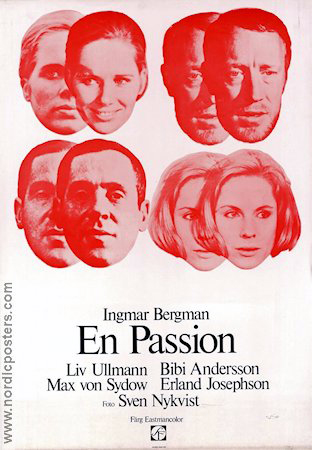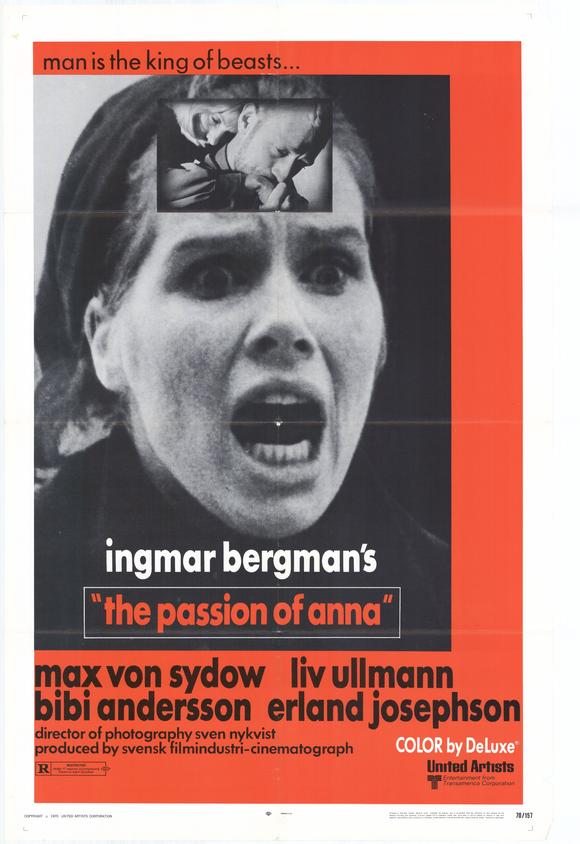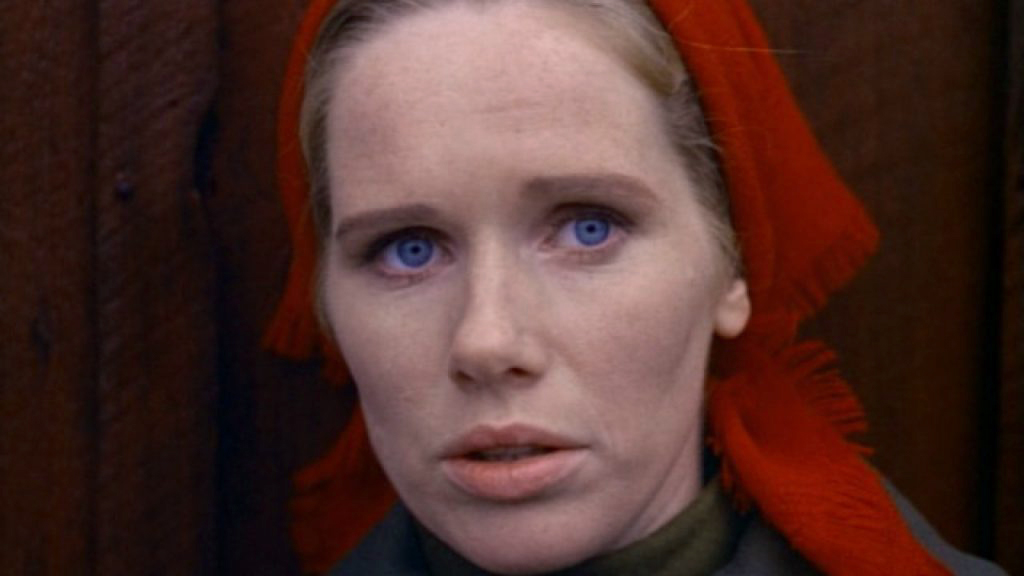Vital images from New York Film Festival
Expect the best new films of the year and fresh new faces but also a fascinating retrospective section.
-
 Original Swedish movie poster for the film ...
Original Swedish movie poster for the film ... -
-
By kicking off with the world premiere of Martin Scorsese’s “The Irishman,” the New York Film Festival continues its tradition of showcasing the year’s finest new films. Less known is the festival's exquisite retrospective section, this year paying tribute to historically significant film photography. Among the highlights is Ingmar Bergman’s “The Passion of Anna” (1969) shot by Sven Nykvist, the master of utilizing light and lighting in films.
-
 ... the poster that met the American audience.
... the poster that met the American audience. -
-
“Images, not words, capture feelings in faces; nothing can ruin the
atmosphere as easily as too much light,” Sven Nykvist once said. The late Swedish cinematographer, considered to be one of the world’s greatest, was mostly known for his fruitful and faithful collaborations with Ingmar Bergman (he later shot several Woody Allen films plus “The Postman Always Rings Twice” (1981), and “The Unbearable Lightness of Being” (1988)). The two Swedes shared a passion for natural light and gave birth to masterpieces like “The Virgin Spring” (1960), “Through a Glass Darkly” (1961) and “Persona” (1966). In “The Passion of Anna” they embarked on their second color film with more muted tones. Shot on Bergman’s island home Fårö, the film about an isolated man’s romantic involvement with two women captures a mixture of lit outdoor scenes with more claustrophobic ones inside houses.
From Max von Sydow fixing a roof in the winter sun to smoking a pipe near the paraffin lamp and Bibi Andersson’s seduction in red light to Liv Ullman’s shining blue eyes in a green armchair, it wasn't long after “The Passion of Anna” that Nykvist’s big international breakthrough came and he won an Oscar for “Cries and Whispers” (1972). -
 Liv Ullman in a scene from Ingmar Bergman’s “The Passion of Anna” (1969) shot by Sven Nykvist.
Liv Ullman in a scene from Ingmar Bergman’s “The Passion of Anna” (1969) shot by Sven Nykvist. -
Aside from the Swedish film of the retrospectives at the New York Film Festival were other visually important titles, such as “The Godfather: Part Two” (1974), “Days of Heaven” (1978), “Dead Man” (1995) and the “The Grapes of Wrath” (1940).
-
 Liv Ullman in a scene from Ingmar Bergman’s “The Passion of Anna” (1969).
Liv Ullman in a scene from Ingmar Bergman’s “The Passion of Anna” (1969). -
New films on the slate open your eyes wide as well. The focused beauty of Pedro Costa’s “Vitalina Varela” from Portugal creates exceptional compositions. Every scene is a painting. Céline Sciamma’s “The Portrait of a Lady on Fire” paints 18th century France with a heartbreaking sharpness while Mati Diop’s Oscar hopeful, “Atlantics,” from Senegal, explores fascinating ghostly love. Stunning “Bacurau” exposes Brazil’s complexity in innovative ways, and “Beanpole” from Russia shocks with deep photography. I can't forget China’s “The Wild Goose Lake,” creating a ravishing Chinese noir and Spanish Pedro Almodóvar, who has returned with his best film in years, “Pain and Glory,” using his colorful trademark palette. From USA Kelly Reichardt dives in to Oregon’s lavishly green and muddy forests with the unshakeable “First Cow,” and Martin Scorsese triumphs with his ode to gangster cinema.
-
As the festival’s centerpiece, Noah Baumbach’s career-best “Marriage Story” is clearly influenced by Ingmar Bergman’s “Scenes From a Marriage” (1974), shot by Sven Nykvist. In future retrospectives all these films will certainly see the light of day.
-
Niclas Goldberg
-
For more info, see www.filmlinc.org/nyff2019/
-
-
